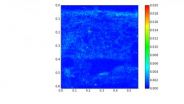(Press-News.org) Differences in the physical connections of the brain are at the root of what make people think and behave differently from one another. Researchers reporting in the February 6 issue of the Cell Press journal Neuron shed new light on the details of this phenomenon, mapping the exact brain regions where individual differences occur. Their findings reveal that individuals' brain connectivity varies more in areas that relate to integrating information than in areas for initial perception of the world.
"Understanding the normal range of individual variability in the human brain will help us identify and potentially treat regions likely to form abnormal circuitry, as manifested in neuropsychiatric disorders," says senior author Dr. Hesheng Liu, of the Massachusetts General Hospital.
Dr. Liu and his colleagues used an imaging technique called resting-state functional magnetic resonance imaging to examine person-to-person variability of brain connectivity in 23 healthy individuals five times over the course of six months.
The researchers discovered that the brain regions devoted to control and attention displayed a greater difference in connectivity across individuals than the regions dedicated to our senses like touch and sight. When they looked at other published studies, the investigators found that brain regions previously shown to relate to individual differences in cognition and behavior overlap with the regions identified in this study to have high variability among individuals. The researchers were therefore able to pinpoint the areas of the brain where variable connectivity causes people to think and behave differently from one another.
Higher rates of variability across individuals were also displayed in regions of the brain that have undergone greater expansion during evolution. "Our findings have potential implications for understanding brain evolution and development," says Dr. Liu. "This study provides a possible linkage between the diversity of human abilities and evolutionary expansion of specific brain regions," he adds.
INFORMATION:
Neuron, Mueller et al.: "Individual Variability in Functional Connectivity Architecture of the Human Brain."
Brain research provides clues to what makes people think and behave differently
2013-02-06
ELSE PRESS RELEASES FROM THIS DATE:
Induction of mild inflammation leads to cognitive deficits related to schizophrenia
2013-02-06
Researchers at the Institute for Comprehensive Medical Science, Fujita Health University and the National Institute for Physiological Sciences, Japan, along with colleagues from 9 other institutions, have identified an exceptional mouse model of schizophrenia. After screening over 160 mutant mouse strains with a systematic battery of behavioral tests, they identified a mutant mouse lacking the Schnurri-2 protein (Shn-2 KO) that exhibits behavioral deficits and other brain features consistent with schizophrenia. Shn-2 is an NF-B site-binding protein that binds enhancers ...
The wings of the Seagull Nebula
2013-02-06
Running along the border between the constellations of Canis Major (The Great Dog) and Monoceros (The Unicorn) in the southern sky, the Seagull Nebula is a huge cloud mostly made of hydrogen gas. It's an example of what astronomers refer to as an HII region. Hot new stars form within these clouds and their intense ultraviolet radiation causes the surrounding gas to glow brightly.
The reddish hue in this image is a telltale sign of the presence of ionised hydrogen [1]. The Seagull Nebula, known more formally as IC 2177, is a complex object with a bird-like shape that is ...
Study points to possible cause of, and treatment for, non-familial Parkinson's
2013-02-06
New York, NY (February 6, 2013) — Columbia University Medical Center (CUMC) researchers have identified a protein trafficking defect within brain cells that may underlie common non-familial forms of Parkinson's disease. The defect is at a point of convergence for the action of at least three different genes that had been implicated in prior studies of Parkinson's disease. Whereas most molecular studies focus on mutations associated with rare familial forms of the disease, these findings relate directly to the common non-familial form of Parkinson's. The study was published ...
X-rays reveal uptake of nanoparticles by soya bean crops
2013-02-06
Scientists have, for the first time, traced the nanoparticles taken up from the soil by crop plants and analysed the chemical states of their metallic elements. Zinc was shown to dissolve and accumulate throughout the plants, whereas the element cerium did not dissolve into plant tissue. The results contribute to the controversial debate on plant toxicity of nanoparticles and whether engineered nanoparticles can enter into the food chain. The study was published on 6 February 2013 in the journal ACS Nano.
The international research team was led by Jorge Gardea-Torresdey ...
Earth-like planets are right next door
2013-02-06
Using publicly available data from NASA's Kepler space telescope, astronomers at the Harvard-Smithsonian Center for Astrophysics (CfA) have found that six percent of red dwarf stars have habitable, Earth-sized planets. Since red dwarfs are the most common stars in our galaxy, the closest Earth-like planet could be just 13 light-years away.
"We thought we would have to search vast distances to find an Earth-like planet. Now we realize another Earth is probably in our own backyard, waiting to be spotted," said Harvard astronomer and lead author Courtney Dressing (CfA).
Dressing ...
Study: Firms that purport to value shareholders pay CEOs more
2013-02-06
CHAMPAIGN, Ill. — Ever wonder why CEOs at poorly performing companies continue to receive exorbitant pay packages? According to a study from a University of Illinois labor professor, firms that trumpet how much they value shareholders actually pay their CEOs more, regardless of the quality of their performance as executives.
Using compensation data from 290 chief executives at large U.S. firms over an 11-year period, Taekjin Shin, a professor of labor and employment relations at Illinois, shows that CEOs at firms with the appearance of a "shareholder-value orientation" ...
Environmental factors determine whether immigrants are accepted by cooperatively breeding animals
2013-02-06
Cichlid fish are more likely to accept immigrants into their group when they are under threat from predators and need reinforcements, new research shows. The researcher suggests that there are parallels between cooperatively breeding fish's and humans' regulation of immigrants. The research was published today, 6 February 2013, in the journal Proceedings of the Royal Society B.
The Princess of Lake Tanganyika (Neolamprologus pulcher), a cichlid fish which is popular in home aquariums, are cooperatively breeding fish with a dominant breeding pair and several 'helper' ...
Nothing fishy about swimming with same-sized mates
2013-02-06
Have you ever wondered why, and how, shoals of fish are comprised of fish of the same size? According to new research by Ashley Ward, from the University of Sydney in Australia, and Suzanne Currie, from Mount Allison University in Canada, fish can use a variety of different sensory cues to locate shoal-mates, but they are able to use chemical cues to find other fish of the same size as themselves. Using these cues, they can form a group with strength in numbers. The work is published online in Springer's journal, Behavioral Ecology and Sociobiology.
Forming groups is ...
Biocontrol research on Brazilian peppertree in Florida discovers new cryptic species
2013-02-06
Dr Michael Pogue, a Research Entomologist in the ARS Systematic Entomology Laboratory, at the Smithsonian Institution, Washington, DC, was sent a series of moth specimens from Bahia, Brazil, for identification. The insects were under consideration as a possible biocontrol agent for the invasive Brazilian peppertree in Florida.
'The species was initially identified as a common species, but when comparisons were made, it became evident that there were multiple species involved' said Dr. Pogue. Using characters from the moths' male and female genitalia, Dr. Pogue determined ...
Widely used nanoparticles enter soybean plants from farm soil
2013-02-06
Two of the most widely used nanoparticles (NPs) accumulate in soybeans — second only to corn as a key food crop in the United States — in ways previously shown to have the potential to adversely affect the crop yields and nutritional quality, a new study has found. It appears in the journal ACS Nano.
Jorge L. Gardea-Torresdey and colleagues cite rapid increases in commercial and industrial uses of NPs, the building blocks of a nanotechnology industry projected to put $1 trillion worth of products on the market by 2015. Zinc oxide and cerium dioxide are among today's most ...





